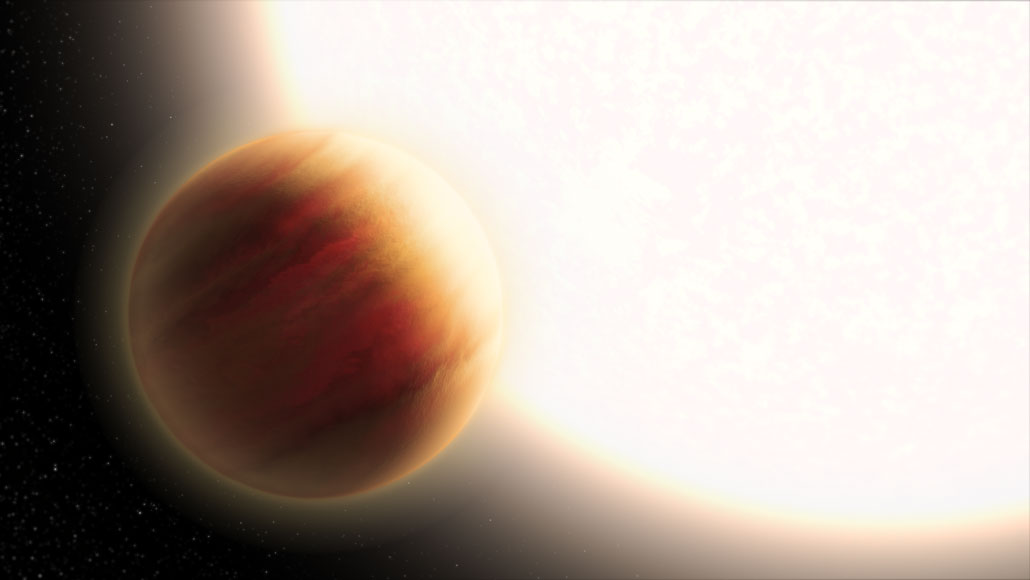Most planets on tilted orbits pass over the poles of their suns
Earth is on an orderly path around the sun, orbiting in nearly the same plane as our star’s equator. In 2008, however, astronomers began finding worlds in other solar systems that sail far above and below their star’s equatorial plane.
Now a surprising discovery about these wrong-way worlds may eventually reveal their origin: Most of them follow polar orbits (SN: 6/17/16). If Earth had such an orbit, every year we’d pass over the sun’s north pole, dive through its equatorial plane, then pass below the sun’s south pole before coming back up again.
Astronomers Simon Albrecht and Marcus Marcussen at Aarhus University in Denmark and colleagues analyzed 57 planets in other solar systems for which the researchers could determine the true tilt between a planet’s orbit and its star’s equatorial plane. Two-thirds of the planets have normal orbits, tilted no more than 40 degrees, the team found. The other 19 planets are misaligned.
But the orbits of those misaligned planets don’t make just any old angle with their star’s equator. Instead, they pile up around 90 degrees. In fact, all but one of the misaligned planets are on polar orbits, having tilts from 80 to 125 degrees, the astronomers report online May 20 at arXiv.org.
“It’s very, very strange,” says Amaury Triaud, an astronomer at the University of Birmingham in England who has found a number of misaligned planets but was not involved with the new study. “It’s a beautifully executed idea, and the result is most intriguing,” he says. “It’s so new and so weird.”
The result may lend insight into the biggest mystery about these planets: how they arose (SN: 10/18/13). Such worlds were a shock to astronomers, because planets form inside pancake-shaped disks of gas and dust orbiting in their stars’ equatorial planes. Thus, planets should lie near the plane of their sun’s equator, too. In our solar system, for example, Earth’s orbit tilts only 7 degrees from the solar equatorial plane, and even Pluto — which many astronomers no longer call a planet — has an orbit tilted only 12 degrees from that plane (and 17 degrees from the Earth’s orbital plane).
“At the moment, we are not sure what is the underlying mechanism” or mechanisms for creating misaligned planets, Albrecht admits. Whatever it is, though, it should account for the newly discovered plethora of perpendicular planets, he says.
A possible clue, Albrecht says, comes from the single exception to the rule: the one misaligned planet in the sample that is not on a polar orbit. This planet also happens to be the most massive in the sample, packing the mass of between five and eight Jupiters. Albrecht says that may be just a coincidence — or it may reveal something about how the other planets became misaligned.
In the future, the astronomers hope to understand how these wayward worlds acquired their odd orbits. All known misaligned planets orbit close to their stars, but are these worlds more likely than normal, close-in planets to have giant planets near them? The scientists don’t yet know, but if they find such a correlation, those companions may have somehow flung these bizarre worlds onto their peculiar planetary paths.
For all the latest Technology News Click Here
For the latest news and updates, follow us on Google News.


